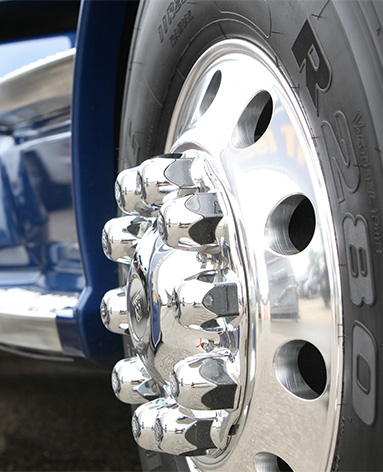Sep . 21, 2024 17:47 Back to list
brake drum lining
Understanding Brake Drum Lining Importance, Materials, and Maintenance
Brake drum lining plays a critical role in the safety and performance of vehicles equipped with drum brake systems. By understanding the components and functionality of brake drum lining, vehicle owners can ensure their braking systems operate effectively, enhancing overall road safety.
What is Brake Drum Lining?
Brake drum lining refers to the friction material affixed to the shoes inside a drum brake system. When the driver applies the brakes, the brake shoes expand into the drum, creating friction that slows down or stops the vehicle. The effectiveness and longevity of this friction depend heavily on the quality of the lining material.
Materials Used in Brake Drum Lining
Brake drum linings are made from various materials, each offering unique benefits
. The most common materials include1. Asbestos-based Linings Historically popular due to their excellent heat resistance and durability, asbestos has largely fallen out of favor due to health concerns. When damaged, asbestos fibers can become airborne and pose serious health risks.
2. Organic Linings These are made from natural fibers like rubber, cellulose, and other organic materials. While they provide good performance under normal conditions, organic linings tend to wear out faster and may not handle high temperatures as well as other materials.
3. Semi-metallic Linings Composed of a mix of metal fibers and organic materials, semi-metallic linings offer better heat dissipation and durability. They are commonly used in high-performance and heavy-duty vehicles but can produce more noise and wear down brake drums faster.
brake drum lining

4. Ceramic Linings These linings provide excellent stopping power, low dust production, and minimal noise, making them popular for high-performance cars. Ceramic linings, however, can be more expensive than other types.
Importance of Brake Drum Lining
The brake drum lining is essential not only for effective braking performance but also for the overall safety of the vehicle. Well-maintained linings ensure shorter stopping distances, stability during braking, and even wear on brake components. Neglecting the condition of brake linings can lead to compromised safety, increased stopping distances, and potentially costly repairs.
Maintenance and Replacement
Regular inspection of brake drum lining is vital. Drivers should be aware of signs indicating that linings may need attention, such as unusual noises during braking, vibrations, or reduced braking performance. It’s advisable to check the lining thickness during routine vehicle maintenance.
Typically, brake linings should be replaced when they have worn down to a specific thickness, usually around 1/8 inch. However, driving conditions, vehicle type, and usage patterns can influence how frequently brake linings need to be replaced. For instance, heavy city driving often results in more wear than highway driving.
Conclusion
In summary, brake drum lining is a crucial component of vehicle safety and performance. Understanding the materials used, their importance, and the maintenance required can help vehicle owners ensure their braking systems function optimally. Regular checks and timely replacements not only enhance safety but also contribute to the longevity of the entire braking system. As with all aspects of vehicle maintenance, being proactive can prevent problems down the road, keeping drivers and passengers safe.
-
ROR Web Development: Build Fast, Scalable, Secure Apps
NewsAug.17,2025
-
Scania Brake Drums: OEM Quality for Optimal Safety & Durability
NewsAug.16,2025
-
R.V.I: Advanced Remote Visual Inspection for Precision
NewsAug.15,2025
-
Discover HYUNDA: Innovative Vehicles, Equipment & Solutions
NewsAug.14,2025
-
R.V.I: Unlock Advanced Insights & Real-time Performance
NewsAug.13,2025
-
Kamaz Brake Drum: Durable & Reliable for Heavy Duty Trucks
NewsAug.12,2025
